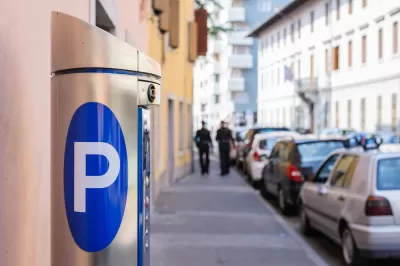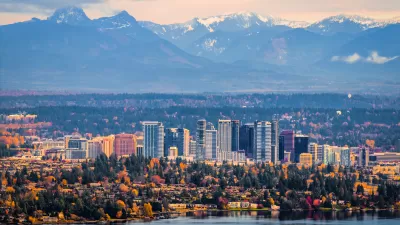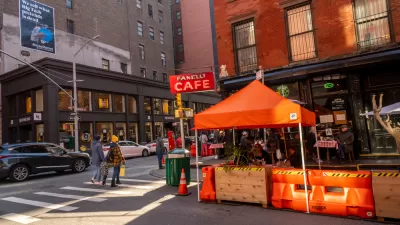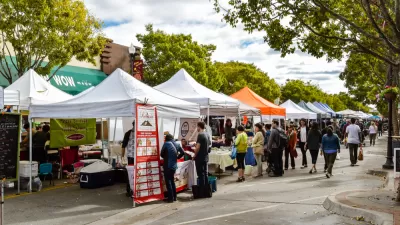In spite of concerns from business owners about losing parking, research shows that retail benefits from better bike and pedestrian infrastructure.

According to an article by David Zipper, "a growing body of evidence suggests that retailers ultimately come out ahead if their neighborhood becomes more inviting to shoppers arriving by foot, bike or transit." Thanks in part to pandemic-related programs that freed up street space for new uses, Zipper writes, the "privileged status that cars enjoy in urban shopping areas is being questioned as never before."
Zipper describes how various cities have repurposed former parking spaces and the reservations that some business owners still have about eliminating car parking. But data shows that business owners' fears, often based on their own experience and the assumption that most people drive to shops, are misplaced: a 2012 study in the Portland region "found that only 43% of bar patrons, 63% of restaurant customers and 58% of convenience store shoppers drove — the rest took transit, biked, or walked." In many urban settings, the customers that frequent small businesses don't drive to their destinations.
Research also shows that economic activity grows when bike infrastructure is installed. In Toronto, an analysis showed increased consumer spending after bike lanes were installed in one commercial district. Jeffrey Tumlin, the director of San Francisco’s Municipal Transportation Agency, suggests implementing small, reversible, community-informed pilot programs to ease business owners and other opponents into new street designs and show how parking conversion actually affects commerce.
FULL STORY: Note to Store Owners: Not All Holiday Shoppers Drive

Florida Considers Legalizing ADUs
Current state law allows — but doesn’t require — cities to permit accessory dwelling units in single-family residential neighborhoods.

Manufactured Crisis: Losing the Nation’s Largest Source of Unsubsidized Affordable Housing
Manufactured housing communities have long been an affordable housing option for millions of people living in the U.S., but that affordability is disappearing rapidly. How did we get here?

Americans May Be Stuck — But Why?
Americans are moving a lot less than they once did, and that is a problem. While Yoni Applebaum, in his highly-publicized article Stuck, gets the reasons badly wrong, it's still important to ask: why are we moving so much less than before?

EV Chargers Now Outnumber Gas Pumps by Nearly 50% in California
Fast chargers still lag behind amidst rapid growth.

Affordable Housing Renovations Halt Mid-Air Amidst DOGE Clawbacks
HUD may rescind over a billion dollars earmarked for green building upgrades.

Has Anyone at USDOT Read Donald Shoup?
USDOT employees, who are required to go back to the office, will receive free parking at the agency’s D.C. offices — flying in the face of a growing research body that calls for pricing parking at its real value.
Urban Design for Planners 1: Software Tools
This six-course series explores essential urban design concepts using open source software and equips planners with the tools they need to participate fully in the urban design process.
Planning for Universal Design
Learn the tools for implementing Universal Design in planning regulations.
City of Moreno Valley
Institute for Housing and Urban Development Studies (IHS)
City of Grandview
Harvard GSD Executive Education
NYU Wagner Graduate School of Public Service
City of Cambridge, Maryland
Newport County Development Council: Connect Greater Newport





























